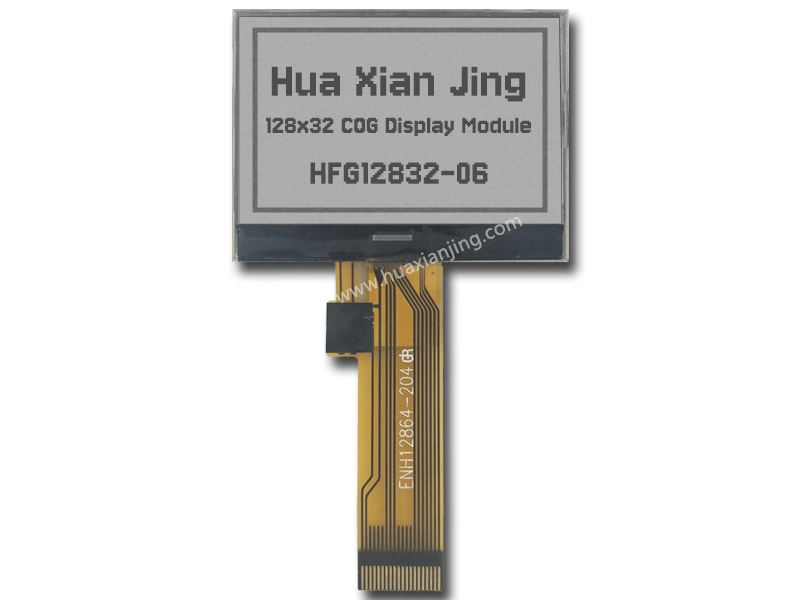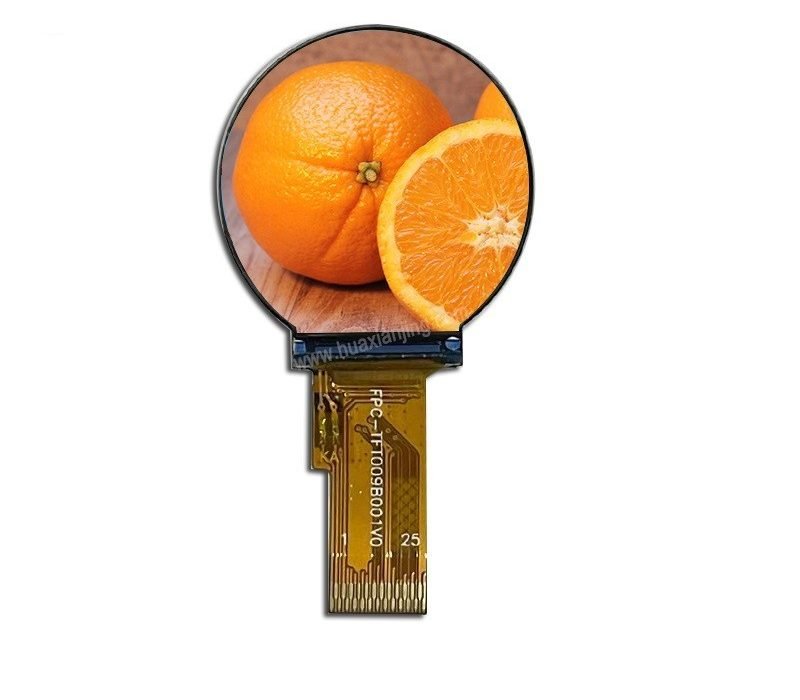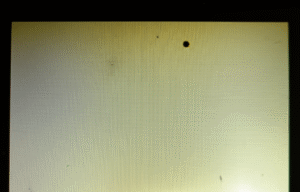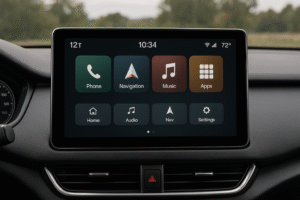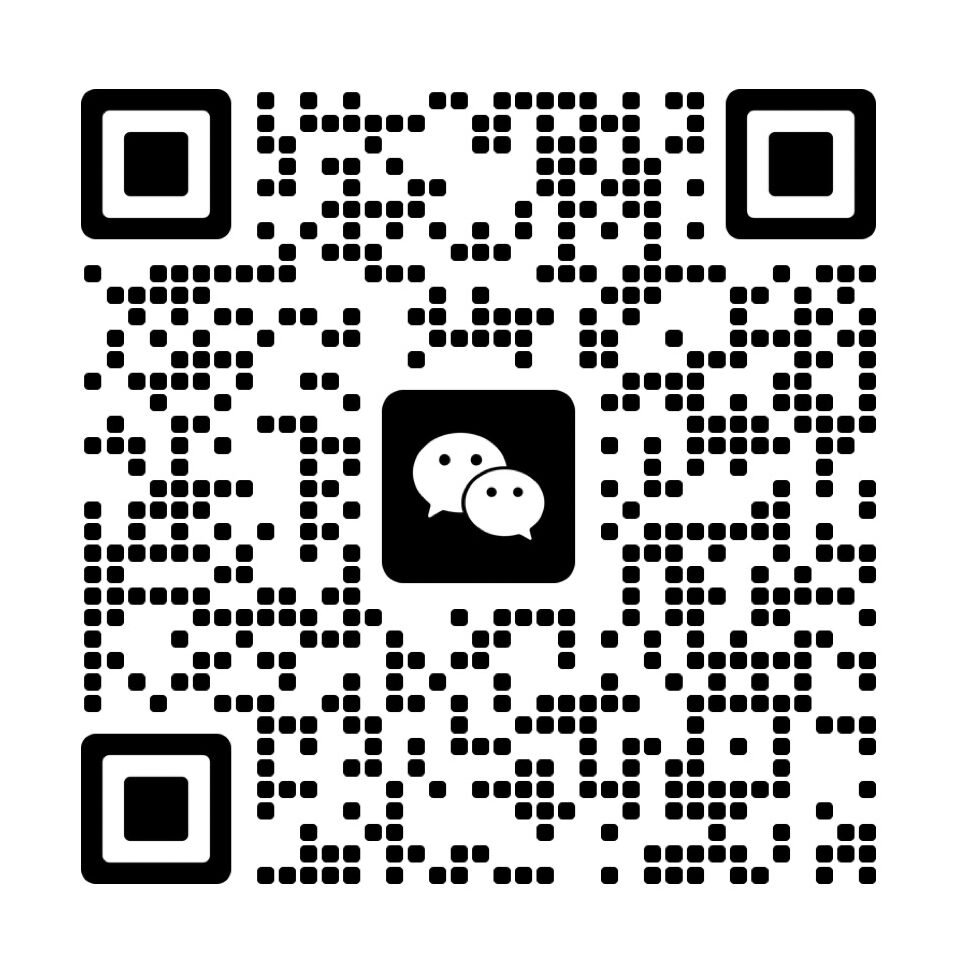
SPI delivers fast data rates, from 10-100 MHz, perfect for large, graphics-heavy LCDs. I2C runs slower, at 100 kHz to 5 MHz, ideal for small, simple displays. SPI uses four wires—MOSI, MISO, SCK, and SS—needing more pins. I2C needs only two wires, SDA and SCL, saving space. SPI supports full-duplex communication, sending and receiving data at once. I2C uses half-duplex, handling one direction at a time. I2C connects multiple devices easily with addressing, up to 128 devices. SPI needs extra SS lines for each device, limiting scalability.
This table shows the key differences:
| Feature | SPI | I2C |
|---|---|---|
| Speed | 10-100 MHz | 100 kHz to 5 MHz |
| Wires | 4 (MOSI, MISO, SCK, SS) | 2 (SDA, SCL) |
| Communication | Full-duplex | Half-duplex |
| Device Support | One device per SS line | Up to 128 devices via addressing |
Your choice depends on LCD size, refresh rate, and pin availability. The following sections dive deeper into performance, wiring, and practical tips to help you decide.
What Are the Core Differences Between SPI and I2C?
SPI and I2C are serial communication protocols used in embedded systems, but they differ significantly in speed, wiring, communication mode, and device support. SPI offers higher data rates (10-100 MHz) and full-duplex communication, making it ideal for graphics-heavy LCDs. I2C uses two wires and supports multiple devices with unique addresses, fitting low-bandwidth applications. This comparison helps developers choose the right protocol for their project.
The differences between SPI and I2C impact hardware design and performance. In projects like Raspberry Pi displays, SPI enables faster data transfer for large screens, while I2C simplifies wiring for smaller displays. Full-duplex in SPI allows simultaneous data exchange, unlike I2C’s half-duplex mode, which requires addressing. I2C excels in multi-device setups, connecting up to 128 devices without additional pins, while SPI needs extra SS lines.
| Feature | SPI | I2C |
|---|---|---|
| Speed | 10-100 MHz | 100 kHz to 5 MHz |
| Wiring | Four wires (MOSI, MISO, SCK, SS) | Two wires (SDA, SCL) |
| Communication Mode | Full-duplex | Half-duplex |
| Device Support | One-to-one, needs SS lines | Multi-slave, up to 128 devices |
How Do SPI and I2C Compare in Speed and Bandwidth?
SPI provides higher data rates, typically 10-100 MHz, while I2C ranges from 100 kHz to 5 MHz. For LCD modules, SPI supports graphics-heavy displays with faster refresh rates. I2C suits smaller screens with lower bandwidth needs, offering enough speed for simple data transfers.
In practice, SPI’s speed benefits projects requiring rapid updates, such as Raspberry Pi dashboards displaying real-time graphics. I2C’s slower speeds are sufficient for text-based displays or sensors in Arduino projects. The choice depends on the data rate needed and the display type used in the system.
| Aspect | SPI | I2C |
|---|---|---|
| Data Rate | 10-100 MHz | 100 kHz to 5 MHz |
| Best Use Case | Graphics-heavy LCDs | Small, low-bandwidth screens |
What Is the Difference in Wiring and Pin Count for SPI and I2C?
SPI requires four wires (MOSI, MISO, SCK, SS) plus ground and power, with extra SS lines for each additional device. I2C uses only two wires (SDA, SCL) plus ground and power, making it simpler for multi-device setups.
In embedded projects, SPI’s wiring can complicate designs with multiple peripherals, as each device needs a dedicated SS line. I2C simplifies hardware layouts, as seen in Arduino sensor networks, where two wires connect multiple devices without additional pins. The trade-off is SPI’s complexity versus I2C’s simplicity.
| Aspect | SPI | I2C |
|---|---|---|
| Wires Needed | Four (MOSI, MISO, SCK, SS) | Two (SDA, SCL) |
| Pin Count Impact | Extra SS lines per device | No extra pins |
How Do SPI and I2C Handle Communication Modes?
SPI uses full-duplex communication, allowing simultaneous send and receive with minimal overhead. I2C operates in half-duplex, transferring data in one direction at a time, with addressing overhead that slows communication.
In SPI-based projects, full-duplex enables fast, continuous data exchange, ideal for high-speed displays. I2C’s half-duplex mode suits slower sensor networks, where devices take turns communicating. For example, in Raspberry Pi setups, SPI ensures smooth graphic updates, while I2C handles sequential data from sensors.
| Aspect | SPI | I2C |
|---|---|---|
| Mode | Full-duplex | Half-duplex |
| Overhead | Minimal | Addressing overhead |
How Do SPI and I2C Support Multiple Devices?
I2C supports multi-slave communication, connecting up to 128 devices using unique addresses on a single bus. SPI uses a one-to-one model, requiring extra SS lines for each additional device, increasing pin count.
In Arduino projects, I2C simplifies connecting multiple sensors or displays with two wires. SPI requires more hardware resources for multi-device setups, as seen in Raspberry Pi projects with multiple displays. I2C’s addressing reduces complexity, while SPI’s SS lines add flexibility for specific applications.
| Aspect | SPI | I2C |
|---|---|---|
| Device Support | One-to-one, SS lines | Multi-slave, 128 devices |
| Wiring Impact | Extra pins per device | Single bus |
How Do Bandwidth and Latency Shape LCD Performance on SPI and I2C?
A 320 × 240 pixel TFT at 8‑bit color pulls 5 Mb s⁻¹; the SPI protocol hits that mark in a single burst, while the I2C bus caps near 5 MHz, so one frame drags across several cycles. High‑pixel panels run fluid over SPI, yet small icons blink fine on I2C when pin budget rules.
During a datalogger build we refreshed a 2.4‑inch TFT from a low‑power MCU; SPI at 40 MHz drew 22 mA and reached 52 fps. Switching to I2C fast‑mode‑plus left bright tearing above 10 fps because ACK overhead robbed bandwidth. We accepted the hit on a variant that showed only digits, saving two MCU pins and 3 cm of ribbon width.
| Metric | 320×240 @8‑bit | SPI (40 MHz) | I2C (1 MHz) |
|---|---|---|---|
| Raw frame bits | 614,400 | – | – |
| Transfer time | – | 15 ms | 614 ms |
| Practical FPS | – | 52 | 1.6 |
Takeaway bullets
- SPI latency sits under 25 µs per write; I2C can spike above 2 ms when arbitration repeats.
- A single DMA burst over SPI frees the CPU; multi‑byte I2C writes stall on STOP/START gaps.
- Overshoot on MOSI lines rises with long flex; shorten traces and add series resistors.
Does the calculated data rate fit common LCD sizes?
Yes, multiply pixels × color bits ÷ frame time. A 128 × 64 monochrome OLED needs only 0.5 Mb s⁻¹, within I2C standard mode. Our lab table:
Rate (Mb/s) = width × height × bpp / (fps × 1,000,000)
| Resolution | Color depth | 30 fps bandwidth |
|---|---|---|
| 128×64 mono | 1 bit | 0.25 Mb/s |
| 240×240 RGB | 16 bit | 27.6 Mb/s |
| 480×320 RGB | 18 bit | 82.9 Mb/s |
Why do latency spikes cause visible tearing?
LCD controllers buffer one line(What is an LCD controller board?). When the bus stalls mid‑frame, the next start waits, leaving the panel to show half‑updated pixels. OSCilloscope logs on our wearable board showed 4 ms gaps on SDA as arbitration retried, long enough for the eye to spot tearing lines.
What refresh targets demand SPI over I2C?
Any screen above 200 kb per frame or above 20 fps needs SPI unless a parallel DPI port exists. Below that threshold, I2C’s two‑wire simplicity outweighs speed.
Rules of thumb
- • If frame_size × fps exceeds 4 Mb/s, pick SPI.
- • If MCU has ≤2 spare GPIOs, stay with I2C and lower fps.
How Do SPI and I2C Differ in Hardware and Wiring Complexity?
SPI uses four signal lines—MOSI, MISO, SCK, and SS—plus power and ground. I2C only uses two shared lines, SDA and SCL, which need pull-up resistors. SPI provides faster communication but takes more pins and wiring. I2C simplifies layout and wiring, especially in tight designs.
When integrating a display in a wearable device, I found SPI routing difficult. The board needed careful layer planning to avoid crosstalk. I2C, by contrast, allowed for thin, flexible PCBs with minimal traces. The wiring simplicity of I2C often outweighs its speed limits in low-power or compact designs.
See the visual comparison below. It clearly shows the wiring complexity, pin requirements, and use of pull-up resistors or chip-selects.
Why Is wiring complexity Different Between SPI and I2C?
SPI needs one data-in line (MISO), one data-out line (MOSI), a clock line (SCK), and a chip-select line (SS) for each slave device. That means more wires per device. I2C uses just SDA and SCL for all devices, with unique addresses on the same two lines.
Here’s a simple wiring comparison for one display:
- • SPI: MOSI, MISO, SCK, SS, GND, VCC → 6 total wires
- • I2C: SDA, SCL, GND, VCC → 4 total wires, regardless of how many devices
Below is a visual wiring diagram:
| Signal | SPI Connection | I2C Connection |
|---|---|---|
| Data Lines | MOSI, MISO | SDA |
| Clock | SCK | SCL |
| Select | SS (per device) | None |
| Others | GND, VCC | GND, VCC, 4.7kΩ pull-ups |
What Are the PCB layout trade-offs for SPI and I2C?
In compact PCBs, trace count and routing layers matter. SPI’s multiple lines need careful routing, isolation, and more vias—especially at high speed. I2C fits well into flex-PCBs or FPCs with fewer traces and easier routing.
I once designed a foldable FPC display board. With SPI, it needed 5 traces that twisted through two hinges. Switching to I2C reduced it to 3 traces and simplified shielding. That enabled better signal integrity and fewer board layers.
Here’s a design impact comparison:
| PCB Factor | SPI | I2C |
|---|---|---|
| Trace Count | 4–6 | 2–3 |
| Routing Layers | More needed for separation | Single-layer possible |
| Shielding Need | Higher at MHz speeds | Lower, easier layout |
What Are the component cost differences?
I2C needs pull-up resistors (typically 4.7 kΩ) on SDA and SCL. SPI often needs level shifters or buffers, especially if using long wires or voltage mismatches between controller and display.
In a cost-sensitive consumer product, I2C reduced part count and simplified the BOM. When I used SPI with 3.3V MCU and 5V display, I had to add voltage translation ICs, which raised costs.
Quick cost summary:
| Component | I2C Requirement | SPI Requirement |
|---|---|---|
| Pull-Up Resistors | 2 (SDA, SCL) | None |
| Voltage Level Shifter | Rare | Often needed |
| Signal Buffers | Not typical | Recommended on long traces |
How Do SPI and I2C Handle Multi-Device Configurations?

| Feature | SPI | I2C |
|---|---|---|
| Device Management | Dedicated SS lines or daisy-chaining | 7-bit/10-bit addressing |
| Pin Usage | Higher, needs extra pins | Lower, two wires |
| Best Use Case | High-speed devices | Multiple sensors/LCDs |
// Example: I2C multi-device communication
#include <Wire.h>
void setup() {
Wire.begin(); // Initialize I2C bus
Wire.beginTransmission(0x3C); // Start transmission to LCD at address 0x3C
Wire.write(0x00); // Send data to LCD
Wire.endTransmission();
Wire.beginTransmission(0x48); // Start transmission to sensor at address 0x48
Wire.write(0x01); // Send data to sensor
Wire.endTransmission();
}
void loop() {}
How Does I2C’s Addressing Support Multiple Devices?
| Aspect | I2C |
|---|---|
| Addressing | 7-bit (up to 128 devices) or 10-bit (up to 1024 devices) |
| Pin Requirement | Two wires |
| Application | Sensors and LCDs |
// Example: I2C communication with two devices
#include <Wire.h>
void setup() {
Wire.begin(); // Initialize I2C bus
Wire.beginTransmission(0x3C); // Address LCD at 0x3C
Wire.write(0x00); // Send data to LCD
Wire.endTransmission();
Wire.beginTransmission(0x48); // Address sensor at 0x48
Wire.write(0x01); // Send data to sensor
Wire.endTransmission();
}
void loop() {}
How Does SPI’s Chip Select Manage Multiple Devices?
| Aspect | SPI |
|---|---|
| Device Selection | Dedicated SS lines or daisy-chaining |
| Pin Requirement | Extra SS pins per device |
| Trade-Off | Pin usage vs. configuration complexity |
// Example: SPI chip select for two devices
#include <SPI.h>
#define SS1 9 // SS pin for device 1
#define SS2 10 // SS pin for device 2
void setup() {
SPI.begin(); // Initialize SPI
pinMode(SS1, OUTPUT); // Set SS1 as output
pinMode(SS2, OUTPUT); // Set SS2 as output
digitalWrite(SS1, HIGH); // Deselect device 1
digitalWrite(SS2, HIGH); // Deselect device 2
digitalWrite(SS1, LOW); // Select device 1
SPI.transfer(0x00); // Send data to device 1
digitalWrite(SS1, HIGH); // Deselect device 1
digitalWrite(SS2, LOW); // Select device 2
SPI.transfer(0x01); // Send data to device 2
digitalWrite(SS2, HIGH); // Deselect device 2
}
void loop() {}
Which Communication Protocol Offers Better Reliability and Signal Integrity: SPI or I2C?
SPI uses push-pull drivers that actively drive signals high and low, offering stronger noise immunity. I2C, in contrast, uses open-drain outputs with pull-up resistors, making it more vulnerable to noise, especially in electrically noisy environments. SPI also enables higher signal integrity on short traces but may suffer on longer cables. I2C can tolerate longer wiring distances, but only at lower speeds. For error handling, I2C has built-in ACK/NACK responses; SPI lacks this, so custom checks are needed.
In one industrial data-logging application, we found SPI too sensitive when traces exceeded 30 cm—signals degraded. Switching to I2C, even though slower, enabled stable communication over longer wires due to its better tolerance for bus capacitance.
How Do Driver Types in SPI and I2C Affect Noise Resistance?
SPI’s push-pull output drives both high and low voltages. This means it actively controls signal transitions and can overpower noise, especially at high frequencies. I2C’s open-drain configuration only pulls lines low, relying on external pull-ups to return lines high. This leads to slower transitions and greater sensitivity to EMI.
In a medical wearable project, we ran SPI lines near a switching regulator. Crosstalk caused bit errors in SPI data. When replaced with I2C and rerouted lines away from power traces, noise issues reduced, but at the cost of lower data rates.
| Feature | SPI | I2C |
|---|---|---|
| Driver Type | Push-pull | Open-drain |
| Noise Immunity | Strong | Weaker |
| Pull-Up Resistors | Not required | Required (e.g., 4.7 kΩ) |
| Common Use Case | High-speed, short distance | Slower, longer distance runs |
How Do Signal Quality and Cable Length Impact SPI and I2C?
SPI, at MHz speeds, needs short, well-matched lines to avoid reflections and signal degradation. Long wires increase capacitance, which affects clock timing and edges. I2C, running at lower speeds, is less sensitive to cable length and signal reflections. However, high capacitance on the bus (e.g., >400 pF) can still distort signals.
In a remote touchscreen project, using SPI with a 1m cable caused failed screen updates. After switching to I2C at 100 kHz, communication stabilized. To mitigate issues, we used twisted-pair cables, series resistors, and termination capacitors.
| Parameter | SPI | I2C |
|---|---|---|
| Max Cable Length | ~30 cm at high speed | Up to 1–2 m at 100 kHz |
| Capacitance Impact | Affects clock edge timing | Affects rise time |
| Signal Integrity Fixes | Impedance control, buffering | Pull-ups, shorter bus lines |
How Do SPI and I2C Handle Communication Errors?
I2C has a built-in ACK/NACK system. After each byte, the slave sends an acknowledgment to confirm receipt. If missing, the master knows to retry or handle the error. SPI lacks error checking—the master sends data blindly and receives whatever comes back. To detect errors, you must implement custom checks, like CRC or parity bits.
While building an e-paper controller using SPI, we had intermittent data loss. We added a software CRC check after each transfer and retried failed commands. I2C would have made error detection easier but couldn’t meet the required bandwidth.
| Feature | SPI | I2C |
|---|---|---|
| Built-in Error Check | None | ACK/NACK per byte |
| Retry Support | Manual (custom logic) | Native in protocol |
| Software Overhead | Higher if checks added | Lower due to built-in support |
| Use Case Example | SPI + CRC for screen refresh | I2C + ACK for sensor polling |
Below is a quick-reference comparison table:
I2C has a built-in ACK/NACK system. After each byte, the slave sends an acknowledgment to confirm receipt. If missing, the master knows to retry or handle the error. SPI lacks error checking—the master sends data blindly and receives whatever comes back. To detect errors, you must implement custom checks, like CRC or parity bits.
While building an e-paper controller using SPI, we had intermittent data loss. We added a software CRC check after each transfer and retried failed commands. I2C would have made error detection easier but couldn’t meet the required bandwidth.
| Feature | SPI | I2C |
|---|---|---|
| Built-in Error Check | None | ACK/NACK per byte |
| Retry Support | Manual (custom logic) | Native in protocol |
| Software Overhead | Higher if checks added | Lower due to built-in support |
| Use Case Example | SPI + CRC for screen refresh | I2C + ACK for sensor polling |
Setup Instructions
Correct wiring is the first step to successful communication. Below are detailed instructions for both SPI and I2C setups.
SPI Wiring Setup
SPI requires four main connections: MOSI (Master Out Slave In), MISO (Master In Slave Out), SCK (Serial Clock), and SS (Slave Select), plus power and ground.
- • Step 1: Identify Pins
Refer to your microcontroller’s datasheet. For an Arduino Uno:- • MOSI: Pin 11
- • MISO: Pin 12
- • SCK: Pin 13
- • SS: Any digital pin (e.g., Pin 10)
- • Step 2: Connect the LCD
- • LCD MOSI → Microcontroller MOSI
- • LCD MISO → Microcontroller MISO (if supported; otherwise, leave unconnected)
- • LCD SCK → Microcontroller SCK
- • LCD SS → Microcontroller SS (e.g., Pin 10)
- • LCD VCC → 3.3V or 5V (per LCD specs)
- • LCD GND → Ground
- • Step 3: Multiple Devices
For additional SPI devices, assign a unique SS pin to each (e.g., Pin 9 for a second device). - • Step 4: Minimize Signal Issues
Use short wires (<10 cm) to prevent signal degradation at high speeds.
I2C Wiring Setup
I2C uses just two lines: SDA (Serial Data) and SCL (Serial Clock), with pull-up resistors to stabilize the signals.
- • Step 1: Identify Pins
On an Arduino Uno:- • SDA: Pin A4
- • SCL: Pin A5
- • Step 2: Connect the LCD
- • LCD SDA → Microcontroller SDA
- • LCD SCL → Microcontroller SCL
- • LCD VCC → 3.3V or 5V
- • LCD GND → Ground
- • Step 3: Add Pull-Up Resistors
Connect 4.7 kΩ resistors between SDA and VCC, and SCL and VCC, to ensure the lines stay high when idle. - • Step 4: Sizing Pull-Ups
For faster speeds or longer cables, use smaller resistors (e.g., 1 kΩ) for stronger signals, but monitor power draw. - • Step 5: Multiple Devices
Additional devices share the same SDA and SCL lines, but each must have a unique I2C address.
Note: Always consult the LCD datasheet for exact pinouts and voltage tolerances.
Sample Code
Below are simple, working code examples for SPI and I2C using Arduino. These snippets demonstrate initialization and basic data transfer.
SPI Sample Code (Arduino)
This example initializes SPI and sends a command and data to the LCD.
#include <SPI.h>
#define SS_PIN 10
void setup() {
pinMode(SS_PIN, OUTPUT);
digitalWrite(SS_PIN, HIGH); // Deselect slave initially
SPI.begin();
SPI.setClockDivider(SPI_CLOCK_DIV8); // Set moderate speed
}
void loop() {
digitalWrite(SS_PIN, LOW); // Select the LCD
SPI.transfer(0x01); // Example command: clear display
SPI.transfer(0xFF); // Example data: set pixel
digitalWrite(SS_PIN, HIGH); // Deselect the LCD
delay(1000); // Wait 1 second
}
I2C Sample Code (Arduino)
This example initializes I2C and sends a command and character to the LCD.
#include <Wire.h>
#define LCD_ADDRESS 0x27 // Common I2C address for LCDs
void setup() {
Wire.begin();
Wire.beginTransmission(LCD_ADDRESS);
Wire.write(0x01); // Example command: clear display
Wire.endTransmission();
}
void loop() {
Wire.beginTransmission(LCD_ADDRESS);
Wire.write(0x02); // Example command: set cursor
Wire.write(0x41); // Example data: display 'A'
Wire.endTransmission();
delay(1000); // Wait 1 second
}
How Do You Choose Between SPI and I2C for Your LCD Module Project?
Picking a bus starts by matching the speed, pin budget, and display size. Use SPI for large LCDs that refresh fast or show moving graphics. I2C fits small or static panels, or when the board has few spare GPIO pins. Price checks tip to I2C when wiring and connectors must shrink. Teams weigh cost, scalability, and MCU limits before the first board is drawn.
On a wide fitness band with animated icons, SPI lifted fps over 40. A similar step counter used I2C to blink a 128×32 OLED, letting designers save space for a button and battery monitor. Each bus fit its niche by picking the right compromise between cost, speed, and space.
Decision Checklist:
- • LCD resolution: Over 10,000 pixels → SPI
- • Refresh rate: Over 10 fps → SPI
- • Free GPIO pins: Two or fewer → I2C
- • Total device count: Over 5 on one bus → I2C
- • Budget limit: Cheaper connectors/pins → I2C
- • Board area: Under 20 mm width → I2C
| Use-case | Panel size | Data rate needed | Bus fit |
|---|---|---|---|
| Fitness band | 128×32 | Low | I2C |
| Smart thermostat | 320×240 | Moderate | SPI |
| Industrial HMI | 480×320 | High | SPI |
| E-paper sensor hub | 128×128 | Low | I2C |
When Should You Use SPI for LCDs?
Use SPI for graphical LCDs, color panels, or any project where refresh rate or animation matters. SPI also fits when the microcontroller has spare pins and the design can accept wider cables.
Code block to estimate required SPI data rate:
mbps = pixels x bpp x fps / 1,000,000
Where Does I2C Work Best in LCD Projects?
I2C fits low-power, compact devices, or those that must chain several LCDs or sensors. When pins are short or board routes tight, I2C keeps things simple. Examples include meters, fitness wearables, or IoT nodes that display brief status.
I2C selection bullets:
- • Panel under 128×64 pixels
- • Update rate below 5 fps
- • More than 2 devices on one bus
- • Space must fit under 10 mm
A compact data logger with I2C LCD, real-time clock, and barometer ran on two MCU pins and kept traces under 15 cm for EMI control.
FAQ
Can I Use SPI and I2C Together in One Project?
Yes, you can combine SPI and I2C in a single project. Use SPI for high-speed devices like a large LCD and I2C for sensors to save pins.
What Happens if I Exceed I2C’s Device Limit?
I2C supports up to 128 devices with 7-bit addressing, but exceeding this causes address conflicts. Switch to 10-bit addressing or use multiple I2C buses.
How Do Voltage Levels Affect SPI and I2C Connections?
Mismatched voltages (e.g., 3.3V vs. 5V) can damage devices or cause failures. Use level shifters for SPI or I2C to match voltage levels safely.
Is Power Consumption a Concern for SPI or I2C?
I2C uses more power with stronger pull-up resistors at higher speeds. SPI consumes less power for short, simple connections but may need buffers for longer runs.
How Do I Test if My SPI or I2C Setup Is Working?
Use an I2C scanner to verify device addresses or a logic analyzer to check SPI signals. Ensure proper wiring and correct protocol settings in your code.



